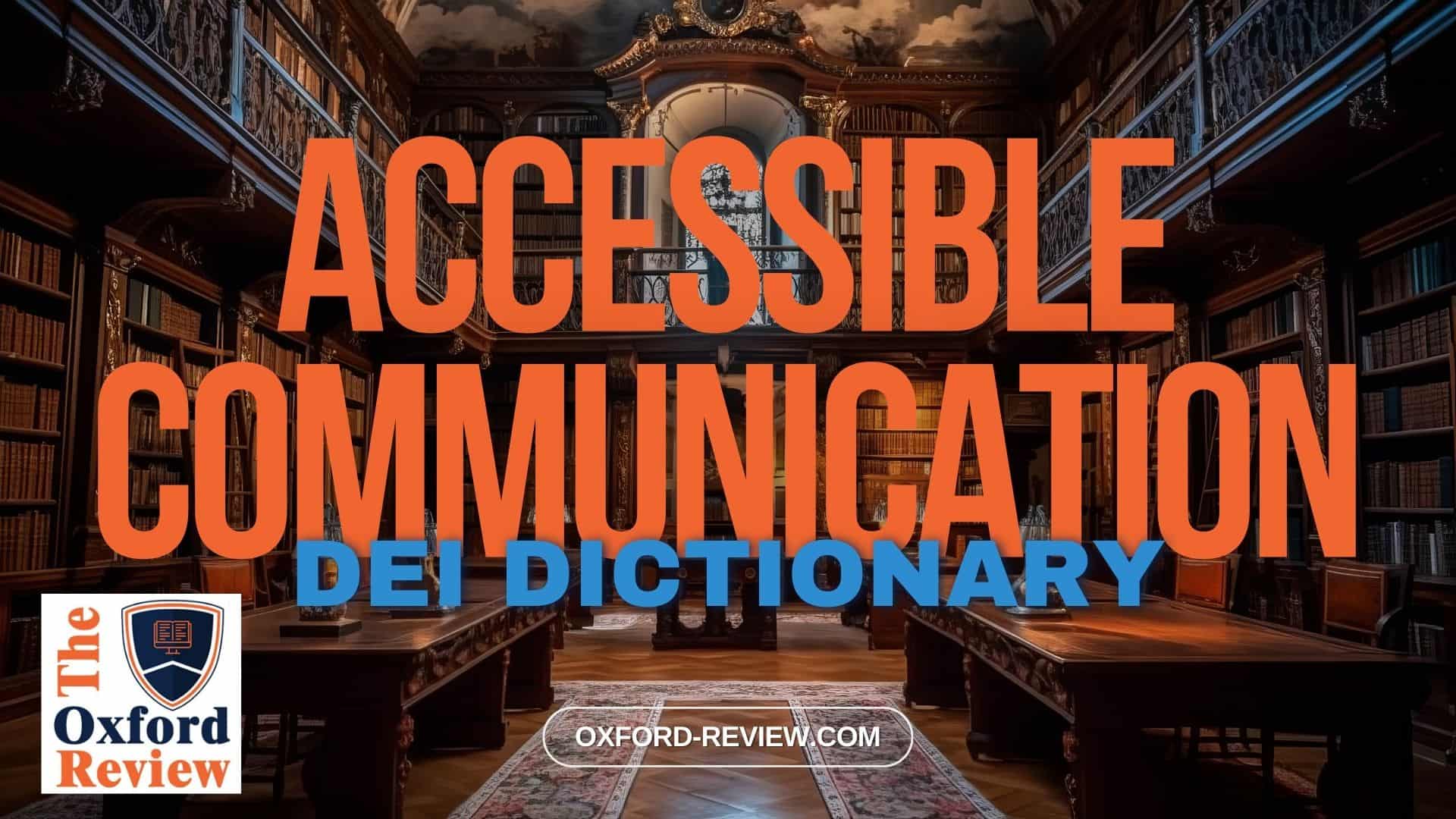Accessible Communication – Definition and Explanation

Understanding Accessible Communication: Key Principles and Examples
In today’s diverse and inclusive world, effective communication isn’t just about transmitting information—it’s about ensuring that everyone can access and understand it. Accessible communication plays a pivotal role in promoting Diversity, Equity, and Inclusion (DEI) by breaking down barriers and fostering understanding among people with different abilities, backgrounds, and perspectives.
Definition:
Accessible communication refers to the practice of creating and delivering information in a way that is easily understood and usable by all individuals, regardless of their abilities or disabilities. It encompasses various strategies and techniques to make content perceivable, operable, and understandable for everyone, including those with disabilities such as visual, auditory, motor, or cognitive impairments.
Key Principles:
- Clarity and Simplicity: Communication should be clear, concise, and easy to understand. Use plain language, avoid jargon, and break down complex concepts into digestible chunks.
- Multiple Modalities: Provide information through different formats such as text, audio, video, and graphics to cater to diverse learning styles and preferences.
- Consistent Formatting: Maintain consistency in formatting, layout, and design to enhance predictability and navigation for all users, including those using assistive technologies.
- Alt Text and Descriptions: Include alternative text descriptions for images, videos, and other non-text content to ensure accessibility for individuals using screen readers or those with visual impairments.
- Captioning and Transcripts: Provide captions for videos and transcripts for audio content to make them accessible to individuals who are deaf or hard of hearing.
- Accessible Technology: Use technology that supports accessibility standards such as screen reader compatibility, keyboard navigation, and adjustable font sizes.
- User Feedback and Testing: Seek feedback from diverse users and conduct usability testing to identify and address accessibility barriers effectively.
Example:
Imagine a company launching a new product and promoting it through a marketing campaign. To ensure accessible communication, they create a website with clear, easy-to-read content written in plain language. They include descriptive alt text for all product images and provide captions for promotional videos. Additionally, they offer a downloadable brochure in both PDF and accessible HTML formats, catering to different user preferences and needs.
Conclusion:
Accessible communication is a fundamental aspect of promoting diversity, equity, and inclusion in all aspects of society. By adopting inclusive practices and embracing accessibility principles, organisations can effectively reach and engage diverse audiences, creating a more equitable and accessible world for everyone.
By implementing these strategies, organisations can not only enhance their DEI efforts but also expand their reach and impact, ultimately driving positive change in society.
References:
Perego, E. (2020). Accessible communication: A cross-country journey (p. 201). Frank & Timme. https://library.oapen.org/handle/20.500.12657/50590
Hansen-Schirra, S., Abels, K., Signer, S., & Maaß, C. (2021). The Dictionary of Accessible Communication (p. 213). Frank & Timme. https://library.oapen.org/handle/20.500.12657/52603
Rossetti, A., & Van Waes, L. (2022). Accessible communication of corporate social responsibility: development and preliminary evaluation of an online module. Business and Professional Communication Quarterly, 85(1), 52-79. https://journals.sagepub.com/doi/full/10.1177/23294906221074324
Flores, A. L., Meunier, J., & Peacock, G. (2022). “Include Me”: Implementing Inclusive and Accessible Communication in Public Health. Assistive technology outcomes and benefits, 16(2), 104. https://www.ncbi.nlm.nih.gov/pmc/articles/PMC10174262/
Mack, K. (2022, October). Accessible Communication and Materials in Higher Education. In Proceedings of the 24th International ACM SIGACCESS Conference on Computers and Accessibility (pp. 1-6). https://dl.acm.org/doi/abs/10.1145/3517428.3550408
Be impressively well informed

Get the very latest research intelligence briefings, video research briefings, infographics and more sent direct to you as they are published
Be the most impressively well-informed and up-to-date person around...
